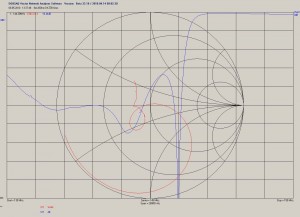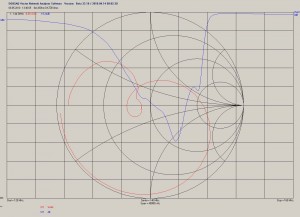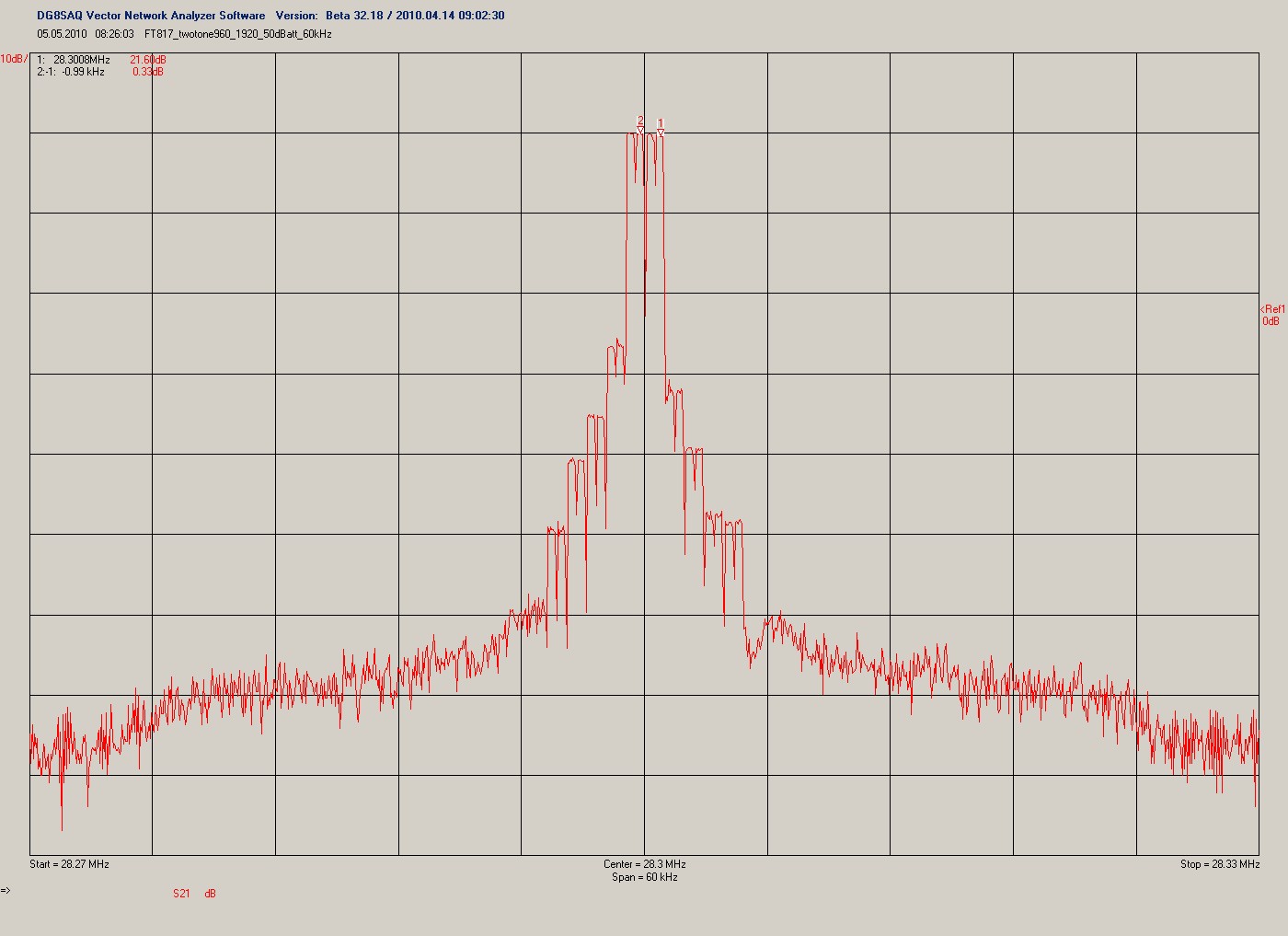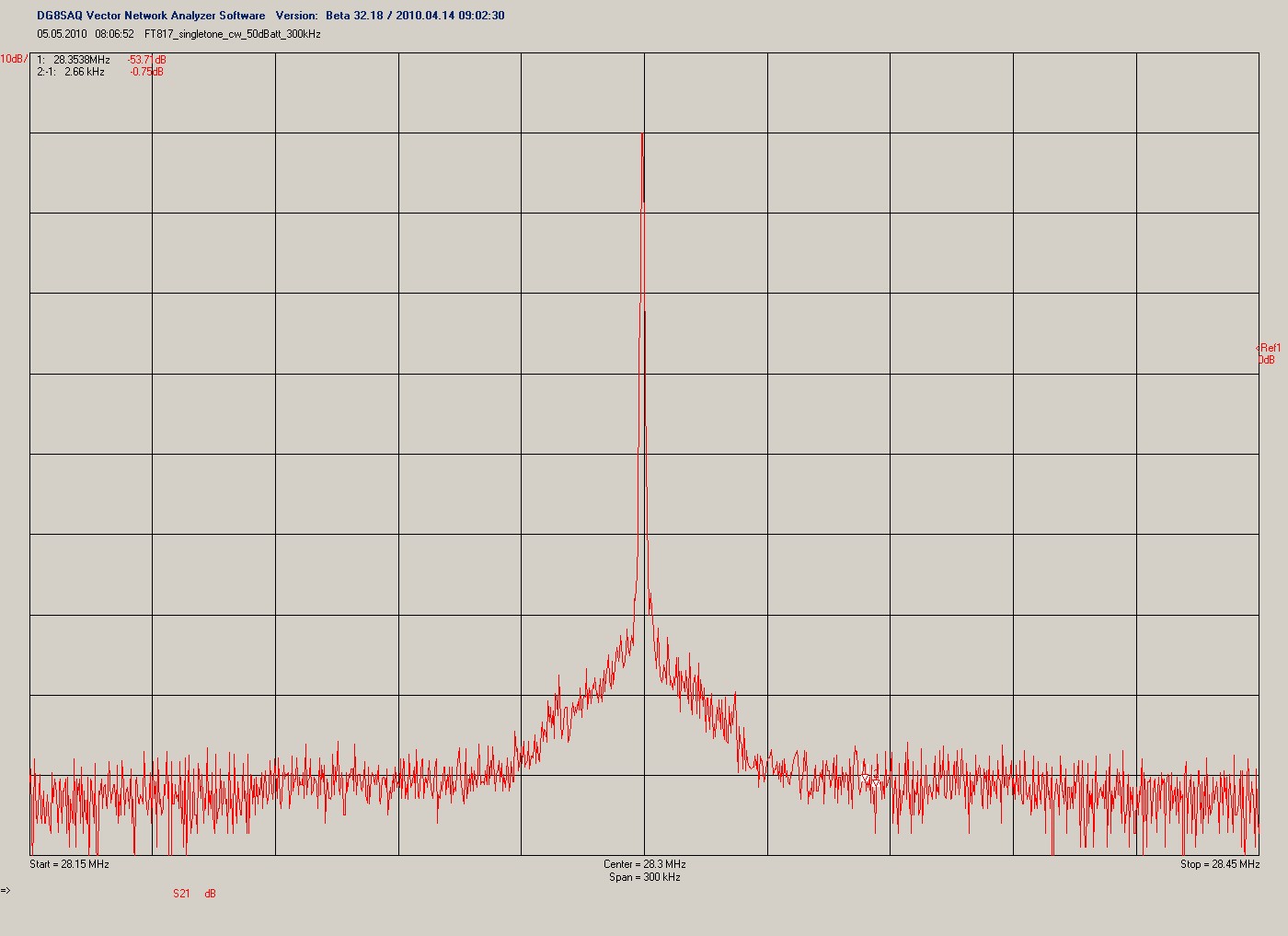For our club events we had to reconstruct some old DK7ZB design yagies because too many of the 6mm diameter elements got broken over the years. We decided to modify the design for 8mm elements to get some more material for the screwholes.
All measurements were done with the VNWA2 with calibration point at the end of a 20m Ecoflex10 cable (directly at dipole connector).
The measurement of the old construction in a high of about 4.5m looked like that:
It can be clearly seen that there is something wrong. Maybe the reason is that some of the elements are going to break and some of them have been already repaired. I do not have a comparison to a version with new elements unfortunately.
After modification to 8mm Elements and optimization of all element lengths with YO with keeping the element locations the picture looks like that:
It can be seen that the best matching of the antenna is slightly too low which is not optimum with some ice on the elements during the march contest. But in general the matching looks like it should now.
For comparison i measured my old 11ele Tonna Yagi as well. The picture surprised me.
The middle of the matching band is around 145MHz which should also do with some minor ice at the elements. The matching itself looks really good. Of course this does not tell anything about how well the antenna works ;)





